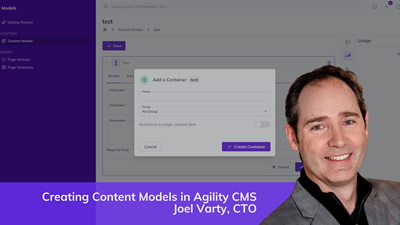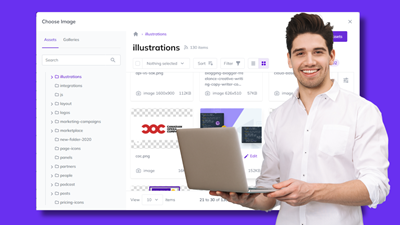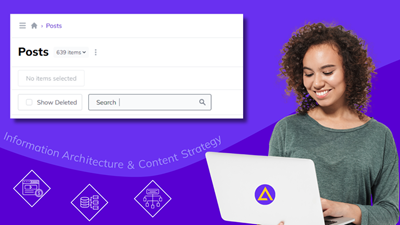CMS Usability & Efficiency- Content Architecture


In today's fast-paced digital landscape, where information flows at lightning speed and businesses are constantly striving to stay ahead of the curve, the importance of content architecture cannot be overstated.
Content architecture serves as the backbone that supports the usability and efficiency of digital platforms, enabling organizations to manage, update, and publish content seamlessly.
In this article, we'll explore why content architecture is so critical and delve into the key components that make it an indispensable aspect of modern content management.
The Urgency of Usability
One of the most significant reasons why content architecture deserves our attention is its impact on usability. In a world where time is of the essence, and competition is fierce, the ability to swiftly and effortlessly execute tasks within a content management system can make or break a business's success. The overarching goal of any content platform is to facilitate the seamless management, creation, and dissemination of content, thereby contributing to improved workflows, better collaboration, and efficient communication.
Imagine trying to run a restaurant during the pandemic and failing to promptly update your operational status on your website. Meanwhile, your competitor next door has efficiently displayed their shift to online orders and garnered more business. This scenario underscores the critical role of usability. If a content platform is not user-friendly and efficient, the time-consuming struggle to perform even the simplest tasks can lead to falling behind competitors and missing out on valuable opportunities.
Usability and Employee Retention
Another often overlooked aspect of usability is its direct link to employee retention. Frustrations from inefficient tools and processes can hinder employees from performing at their best, ultimately leading to dissatisfaction and attrition. The "great resignation" phenomenon, where employees leave positions due to various factors, including dissatisfaction with work environments, highlights the urgency of addressing these pain points.
Content architecture plays a pivotal role in this context by ensuring that the tools and processes employees rely on are conducive to their productivity and job satisfaction. When employees can perform their tasks efficiently, they are more likely to feel empowered and engaged, leading to higher job satisfaction and longer retention.
Organizational Efficiency and Scalability
Maintaining efficient workflows becomes even more critical as businesses grow and the volume of content and integrations increases. Human cognitive capacity has its limitations, and as the complexity of content management grows, the need for platforms that organize, prioritize, and streamline tasks becomes paramount. Content architecture contributes to organizational efficiency by enabling teams to focus on their core strengths—creating valuable content and delivering it to the audience.
Workflow orchestration, integrations, and well-defined content architecture enable teams to harmoniously collaborate, reduce redundancy, and ensure consistency across various channels. Platforms that facilitate these capabilities make work more manageable and ensure that employees can transition between tasks seamlessly, enhancing overall productivity.
Time-Saving and Enhanced Quality
Usability and efficiency in content architecture directly contribute to time-saving, allowing employees to allocate their time and energy to tasks that truly matter. When content creation and dissemination are streamlined, employees can focus on producing higher-quality content and engaging with their target audiences more effectively.
Moreover, efficient content architecture fosters better collaboration among team members. When systems are easy to use, and tasks are executed swiftly, it encourages teamwork, leading to enhanced creativity and innovation. As a result, organizations can consistently deliver valuable and relevant content, meeting the ever-evolving needs of their audiences.
The Continual Evolution of Content Architecture
It's important to note that content architecture is not a one-time fix. Instead, it's an ongoing process that requires constant attention, refinement, and adaptation. As organizations grow, technologies evolve, and user preferences change, content architecture must keep pace. New team members joining an organization bring fresh perspectives, making their feedback invaluable for refining and optimizing content architecture.
To ensure that content architecture remains effective, organizations should regularly assess the usability of their platforms, seek user feedback, and identify pain points that need attention. By doing so, they can continually enhance the efficiency of their systems, empowering their teams and maintaining a competitive edge.
In conclusion, content architecture is a critical foundation for achieving usability and efficiency in today's fast-paced digital landscape. From empowering employees to fostering collaboration and ensuring the seamless management of content, content architecture plays a vital role in an organization's success. As businesses strive to navigate the challenges of the modern world, investing in robust and adaptable content architecture is a strategic decision that can yield significant rewards.
Elevating Efficiency and Usability with Agility CMS
In the fast-paced world of content management, Agility CMS stands as a beacon for superior usability and efficiency. With its intuitive interface, adaptable workflows, and scalability, Agility CMS transforms content architecture into a strategic advantage.
Streamlined Management: Agility CMS offers an intuitive user interface that simplifies content creation, minimizing complexity and maximizing productivity.
Seamless Collaboration: Agile workflows and collaboration tools enable teams to work harmoniously, ensuring efficient content creation and editing.
Customizable Scalability: Adaptability is key, and Agility CMS offers customizable solutions to match the unique needs of any organization.
Continuous Innovation: Agility CMS's dynamic updates keep your content architecture current, leveraging emerging trends and technologies.
Embrace Agility CMS to revolutionize your content management strategy, enhancing usability, efficiency, and your competitive edge in the digital arena.

About the Author
Harmonie is the Senior Marketing Manager at Agility CMS



